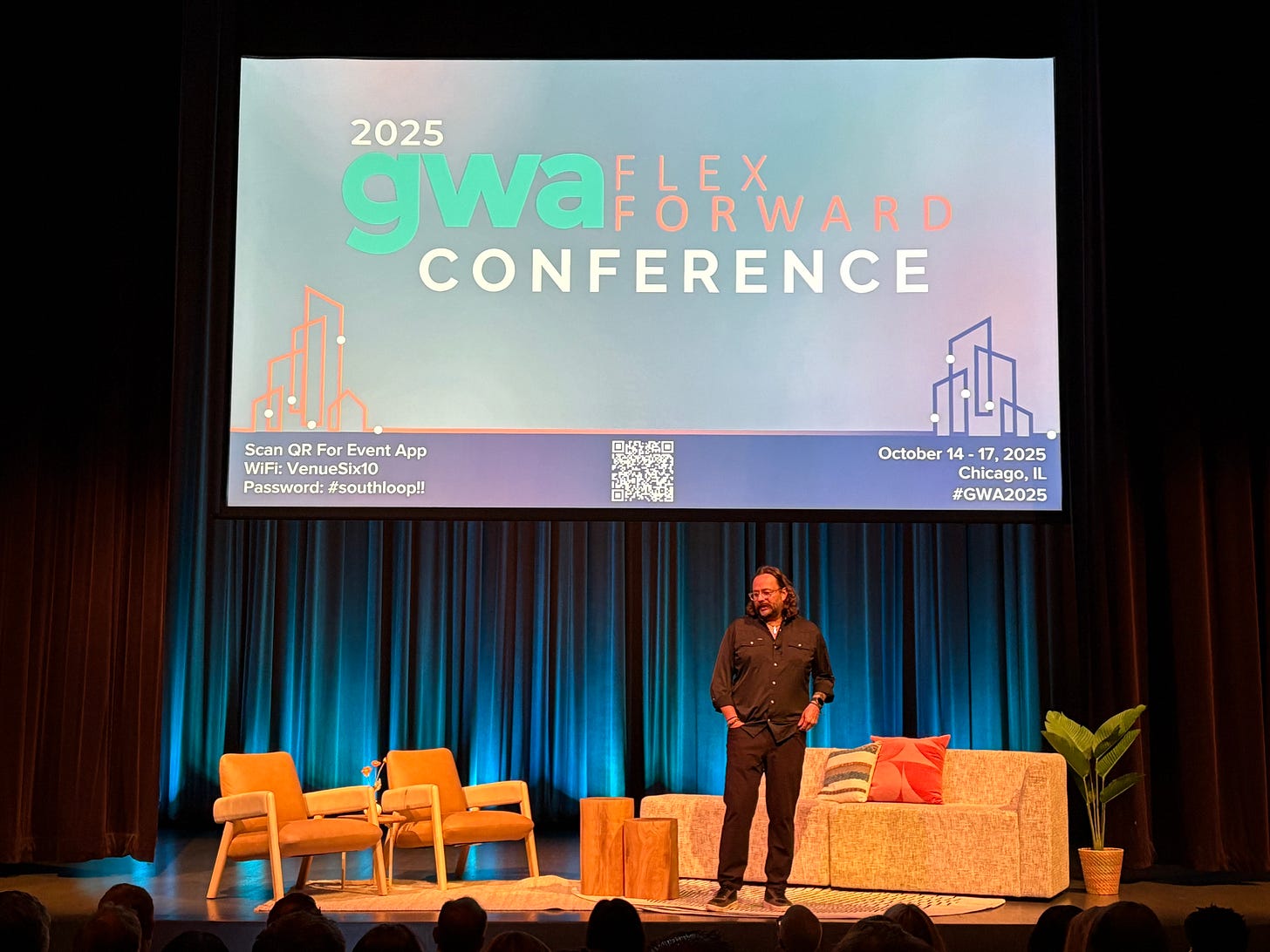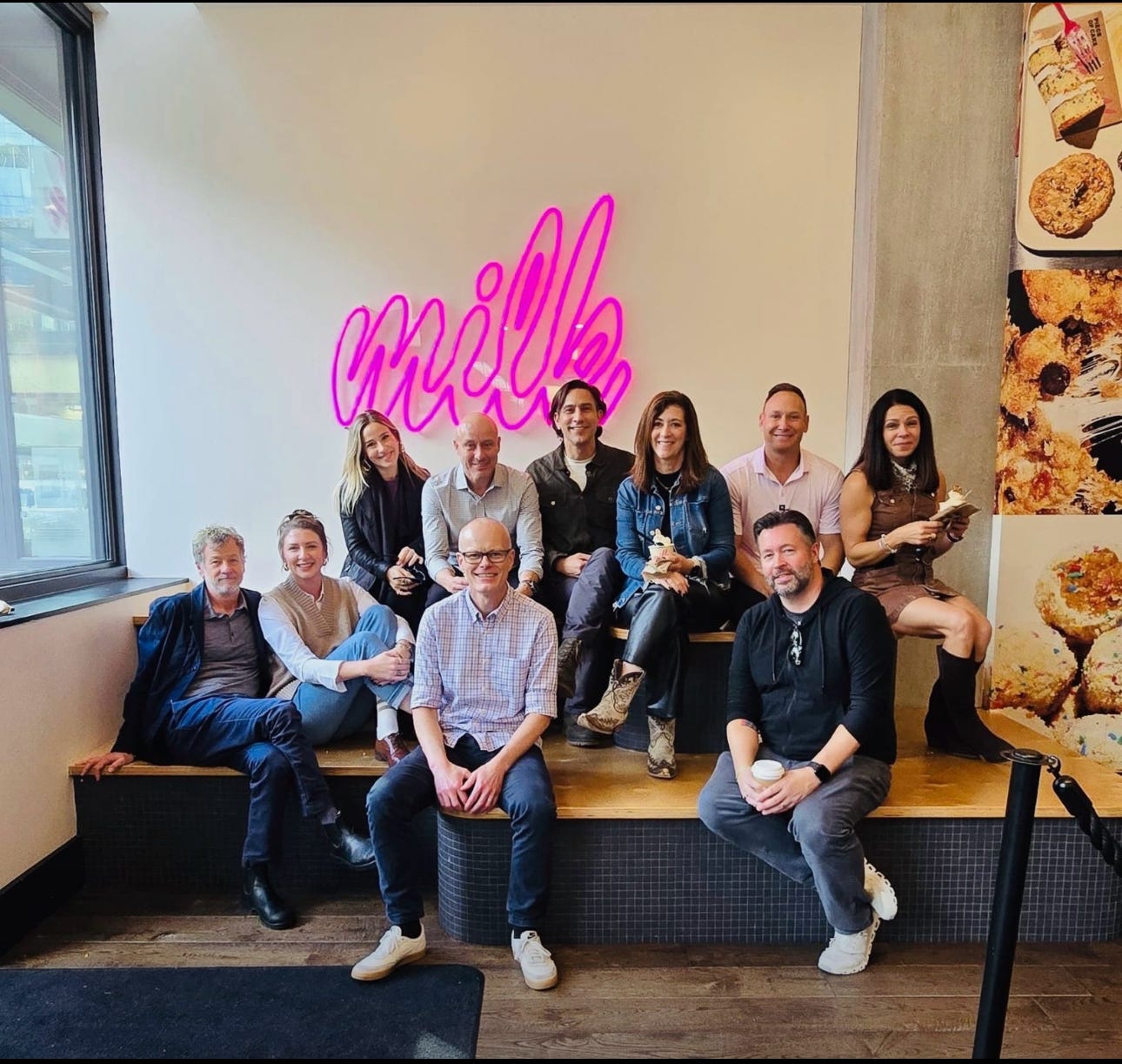Discipline, Data, and the Suburban Flex Revolution
Key takeaways from the Global Workspace Association Conference in Chicago
The recent Global Workspace Association (GWA) Conference in Chicago confirmed what we’ve all known for a while: the flexible workspace industry is navigating a high-growth, high-stakes market. The tectonic plates of corporate real estate have well and truly shifted, with hybrid working now firmly entrenched as the ‘new normal’.
This shift is driving significant enterprise demand - think of it as a corporate scramble for agility - and current supply is struggling to keep up. So, how do we scale sustainably without succumbing to the high-risk, speculative models of the past?
The answer crystallised around three non-negotiable pillars for any operator seeking long-term success: a return to Discipline from the top, a sharp focus on Data-Driven Operations, and a strategic pivot to the burgeoning Suburban Boom.
The WeWork Playbook: Back to Real Estate Fundamentals
The most telling session in Chicago was the candid fireside chat with WeWork CEO John Santora. It offered an invaluable, if slightly uncomfortable, lesson in market reality and disciplined growth.
His core message was a powerful redirection for the entire sector: “WeWork was never a technology company.”
Leveraging his background in property management, Santora has re-centred WeWork on the stuff that actually matters: real estate fundamentals, discipline, profitability, and trust with landlords. This means every deal must now show profit, and expansion must be based on proven demand, not speculation.
The good news for the industry is the Enterprise Pivot. The traditional ‘own-or-lease’ binary is dead; it’s now a ‘three-way choice: own, lease, or flex’. Corporate portfolios are projected to see as much as 20% to 30% of their footprint migrate to flexible solutions. WeWork, along with other big players, is leveraging this through a significant focus on bespoke enterprise deals and management agreements.
Santora also highlighted the new reality of “Frenemies,” emphasising that big brands bring credibility and scale. Collaboration (like the expanding Coworking Partner Network) is absolutely necessary for the industry to meet this rising corporate demand. We need to work together to win the bigger prize.
And technology’s true role? While WeWork’s turnaround was credited to Yardi’s backing and systems, Santora views technology as simply the infrastructure that allows you to operate smarter and stay agile - not the core brand identity. A welcome relief from the tech-first delusion that plagued the sector for too long.
Hybrid Work Redraws the Map: The Suburban Boom
The hybrid model has, somewhat brutally, exposed the uneconomical nature of the traditional office. With employees averaging just 1.79 days per week in a central organisations HQ, those cavernous, beige skyscrapers are sitting largely empty.
This has fuelled a significant shift in demand, and the data is striking:
Suburban Outperformance: The explosive growth is happening in secondary and suburban markets. Demand for flex workspace in towns under 5,000 people grew a stunning 164% last year (albeit off a low base).
The Corporate Migration: Even enterprise clients, once loyal only to the high-rise CBD towers, are now expanding into these areas, fuelling the 170% compound annual growth rate in corporate flex adoption.
A Flight to Quality (Closer to Home): Employees are seeking professional space closer to home to manage their commute, driving a ‘flight to quality’ in well-located suburban and commuter hubs.
The Yield Story: The real kicker? This trend is creating higher yields in smaller cities, which can achieve up to 5x returns compared to 2-2.5x in mature markets like London and New York (according to the Instant Group’s 2025 Global Flexible Workspace Report, comparing flex returns to traditional leases) .
With global supply still lagging demand, operators rooted in local communities are perfectly positioned to scale sustainably in these underserved, high-demand areas. The CBD is no longer the only game in town—or, in fact, the most profitable.
Operational Excellence: The Power of Data and Hospitality
To capture this growth, particularly in new markets, operators must focus relentlessly on two key areas: operationalised hospitality and performance data.
Data-Driven Operations: KPIs as Instruments
Javier García Iza’s quote, “Imagine trying to fly a plane without instruments,” perfectly underscored the necessity of data. We can’t manage what we don’t measure, and flying blind is a recipe for disaster.
To maximise profitability, key metrics are essential across the business:
Operational Metrics: This includes revenue and desk Occupancy, Retention/Churn, and most crucially, CX/NPS (including those all-important Google reviews).
Sales Speed: The source of the lead matters - referrals have a much higher conversion rate - but speed to respond is king. AI automation is necessary to respond IMMEDIATELY to every lead, whatever the time of day or night. You snooze, you lose.
Platform Value: For enterprise clients, the platform, not the vendor, is the first flexible office decision. Why? Because platforms provide the aggregated utilisation data corporate real estate teams need to make geographic expansion/contraction decisions.
The Human Element: Hospitality and Culture
The collective consensus was that good hospitality is not just an art; it is an operationalised discipline.
Retention through Amenities: Research confirms that a broad array of meaningful amenities are an absolute necessity, but tenant engagement with those amenities is critical - tenants who don’t engage with the building have the highest churn rates. This highlights the strategic opportunity for operators to manage or integrate whole of building amenities. People need a reason to come and to stay, and human connection is a critical component.
People-First Culture: Success requires a laser focus on onboarding, training, and real-time feedback for staff. Investing in training and culture - like WeWork’s initiative with Ritz Carlton for training - is essential, even if execution is challenging.
Radical Transparency: The “Hot Tub Thursday” concept (courtesy of WOTSO, and for clarity, its an online discussion, not a real hot tub!) - where leadership teams are radically transparent and open to all questions - highlights how shared learning strengthens a team. Honesty builds the trust that is the lifeblood of a successful, scalable operation.
AI and Risk: Proceed with Caution
While AI’s potential for automation and personalisation in hospitality is vast, the conference highlighted significant risks and the need for a measured approach.
The Cybersecurity Blindspot: A shocking majority of attendees were unaware that information put into tools like ChatGPT becomes essentially publicly available, highlighting a major cyber security risk for the industry. You must know what data you’re sharing and where it goes.
Tech’s True Role: The consensus is clear: tech can’t replace the human connection; but it can amplify it. AI can streamline routine tasks (like bookings and check-ins) to free up staff to focus on high-touch, human-centric services that drive satisfaction and loyalty.
Conclusion
The GWA 2025 conference delivered a good news for the flexible workspace industry: Demand is strong, driven by enterprises migrating to flex.
Success now depends on adopting the renewed focus on discipline and real-estate fundamentals championed by John Santora, aggressively pursuing the high-yield suburban and secondary market opportunity, and building a business that uses data and AI as infrastructure to amplify, not replace, our core competency of operationalised human hospitality.
After all, if you’re not providing exceptional workspace hospitality, why would your potential customers choose you over their own comfortable home?






